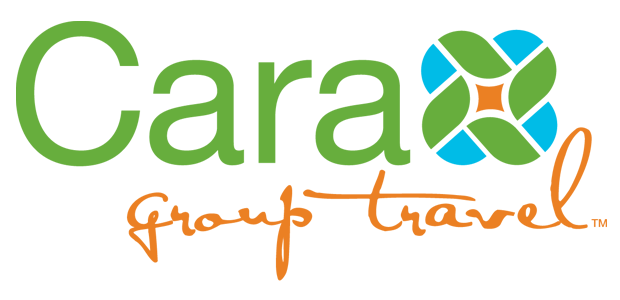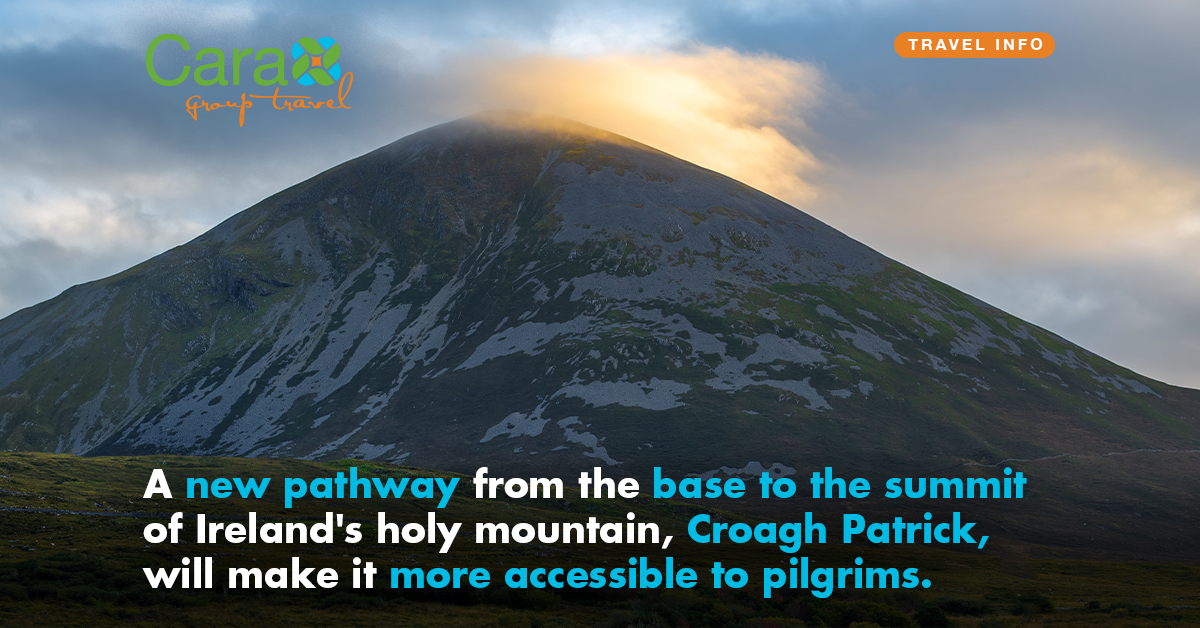New Pilgrim Path opens on Croagh Patrick
A new pathway running from the base to the summit of Ireland’s holy mountain – Croagh Patrick – will make it accessible to more pilgrims.
Said to be the mountain where, in the fifth century, Ireland’s patron saint, St Patrick, spent 40 days and 40 nights fasting, Croagh Patrick attracts tens of thousands of pilgrims every year.
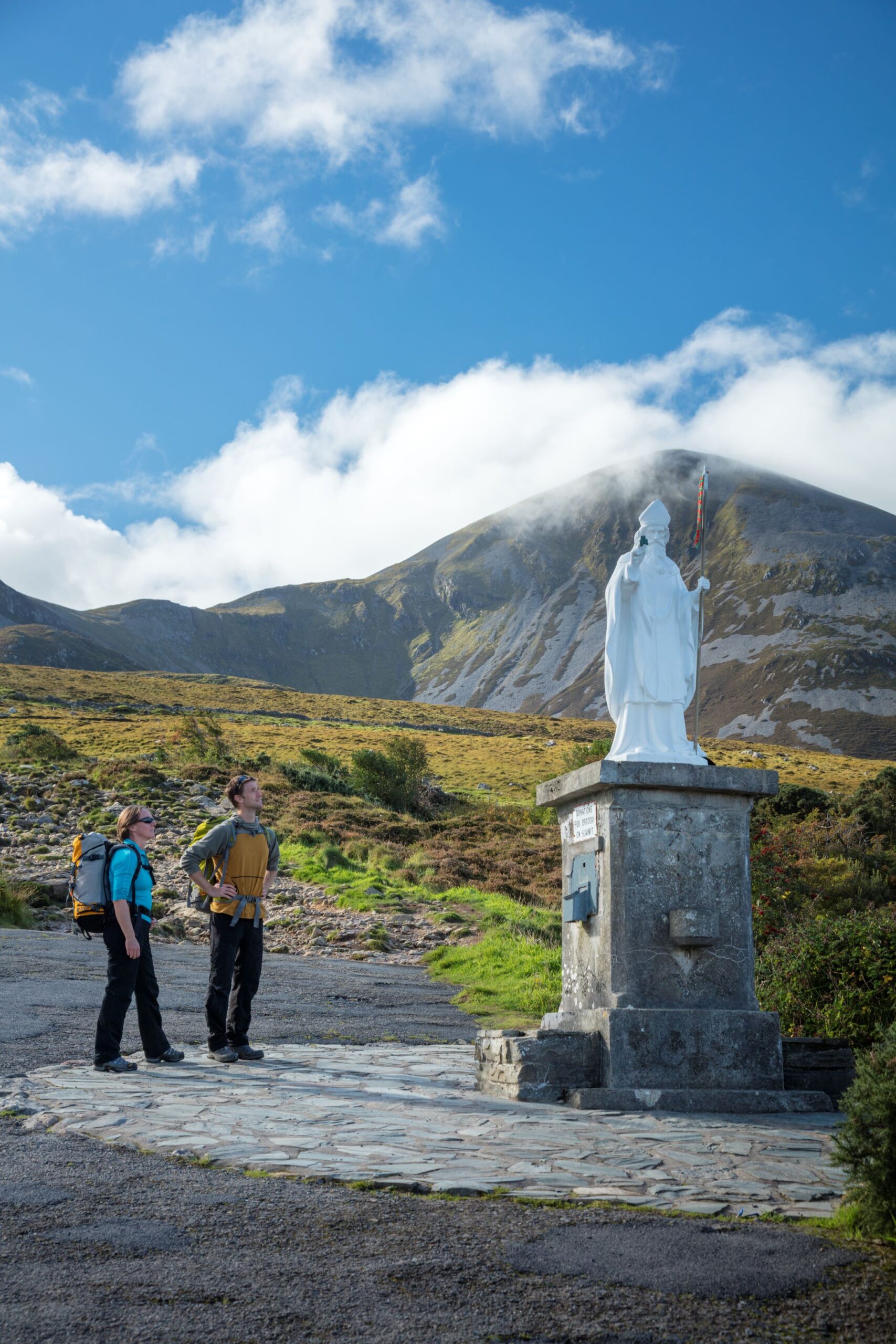
Concerns about the safety of climbers using the old, eroded path and about the damage to the natural environment and habitats on the mountain from the footfall led to the project to build a new path.
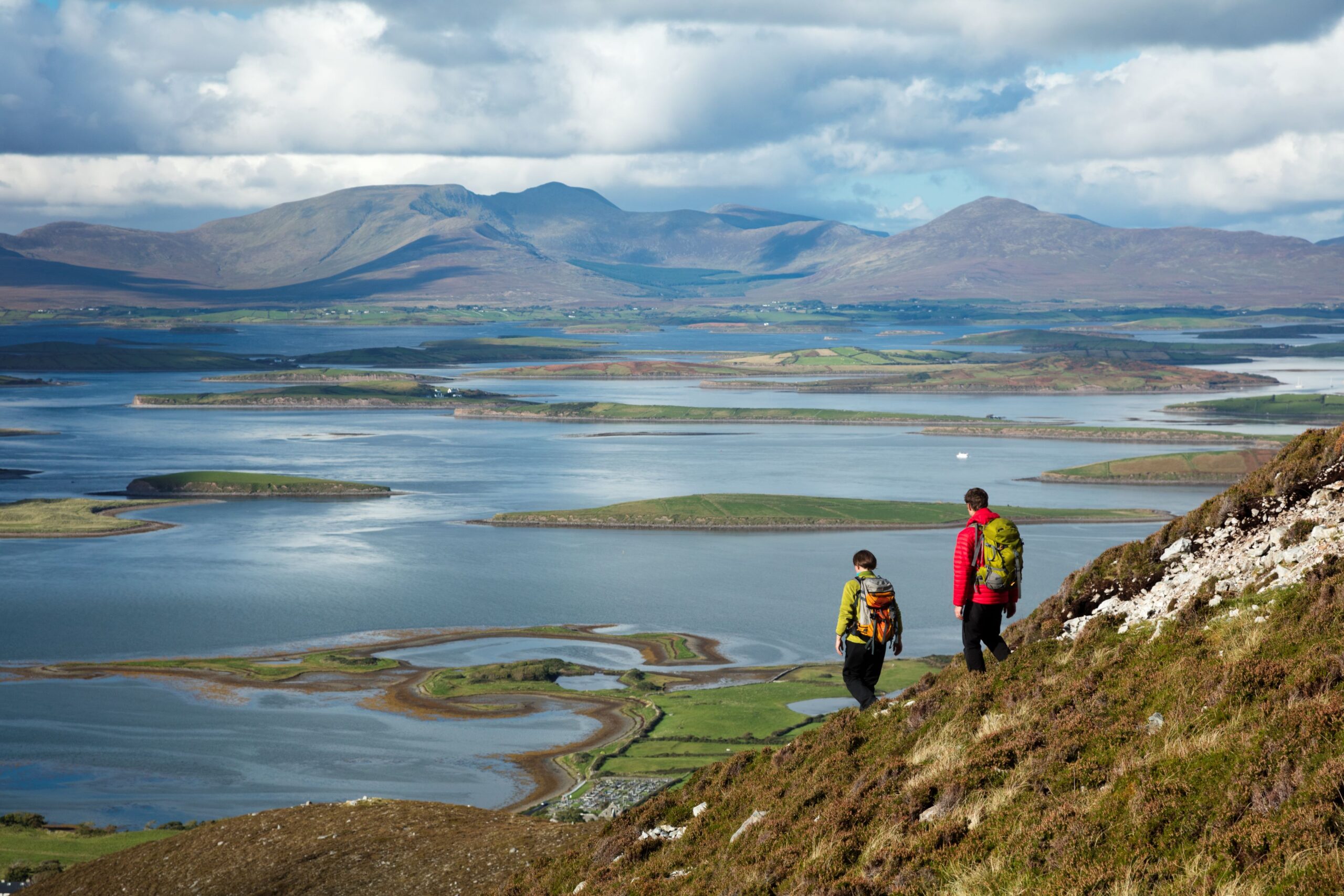
The new 2m-wide, 4km-long path was built by hand over three years using only materials found on the mountain, which is also known as the Reek. The team moved thousands of tons of stone and almost as much soil to build the path and scoured the mountain to find up to 20 stones needed to build each step.
The new path will be welcomed by visitors to the mountain whether on pilgrimage or those who hike the 764m-high mountain to enjoy the stunning views across the County Mayo countryside and the Wild Atlantic Way coastline.
The busiest day in the year for Croagh Patrick is the last Sunday in July, which is an annual pilgrimage day in Ireland known as Reek Sunday or Garland Sunday. Thousands of people will climb the mountain to hear mass in the chapel at the summit. It was built in 1905 by 12 local men using local stone and cement that was hauled up the mountain by donkey.
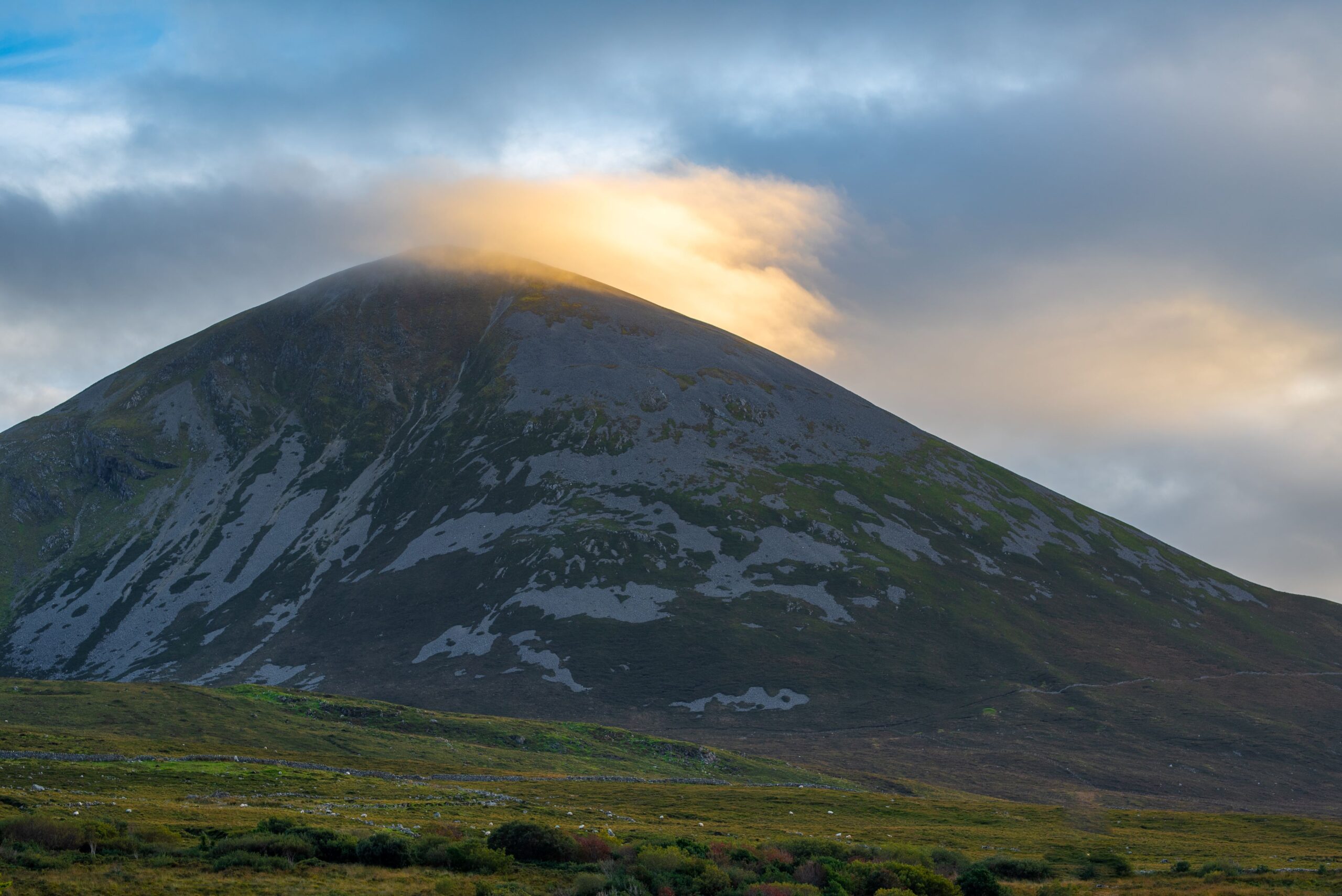
Croagh Patrick is also the end point of the 61km Croagh Patrick Heritage Trail, a national way-marked way which begins in the village of Balla in east Mayo. The walking route traverses many types of terrain including woodland, bog, mountain track and country lanes and passes several heritage sites of archaeological significance. These include thirteenth-century Ballintubber Abbey, the stone bed at Aughagower that St Patrick is reputed to have slept in, and the Boheh Stone, a rock outcrop with art carvings dating to 3000 BC.
Although Croagh Patrick is today associated with St Patrick and Christianity, it was a place of pagan worship as far back as 3000 BC. It was originally called Cruachán Aigli, meaning Eagle Mountain or Mount Eagle, and was a place of gathering at the ancient Celtic festival of Lughnasa in August.
Are You Interested in Bringing Your Group to Ireland?
Contact Cara Group Travel at 617-639-0273 to speak to a representative, or fill out the quick contact form below and a representative will get in touch with you! If you have a travel question or a general inquiry, please do not hesitate to reach out to us.
